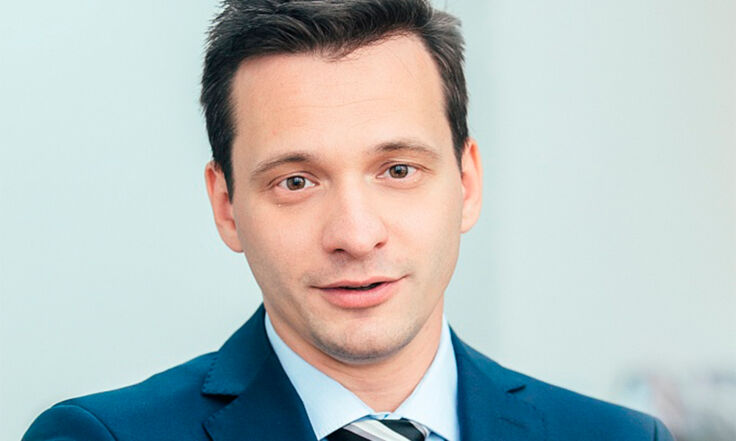9 years ago, Eocortex was an unknown startup that won the National Innovation Award and atracted funds of a venture investor. Since then, the company has demonstrated stable annual growth. It has gained a footing on the market with the product sold under two different brands at the same time. Mr. Artyom Razumkov, the founder and CEO of Eocortex, tells Ponedelnik magazine about the “pains” and trends of the video surveillance industry.

— Mr.Razumkov, how did you become an entrepreneur?
— I worked for an integrator company that implemented video surveillance systems. Eventually, I got some engineering ideas regarding the ways to improve the operation of the systems. I decided to approach the market with them. But before starting to sell something, it is necessary to develop a technology and create a product. In order to successfully pass thru this “valley of death”, as it is called in startups, we started looking for venture investors. A director of one of the venture funds told me that the idea of the product did not look revolutionary to him, the market did not look promising either, but our team seemed to him capable of pulling it off, so he decided to invest in our idea. Approximately in one year we entered the market. The customers’ reaction was incredulity. The approach to data processing that we proposed seemed to them rather fanciful. The leading experts of the market did not believe that it was possible to perform video analysis in the compressed video stream with high accuracy. Some claimed that our proposal, to put it mildly, did not reflect reality. But we tried to be as open as possible, offering any doubter a chance to download and try out a free demo version of our product. The openness and commitment allowed us, in just six months, to attract tens of system integrators and enter into the product portfolios of several distributors.
— Let us talk about something that required so much effort: the product. What problems does it solve?
— It is the software for video surveillance systems that allows to process the data generated by them. We teach the system to understand what is going on in the frame, and retrieve certain data. A simple example would be the detection of absence of a hard hat on the head of an employee. This software module processes the stream from the camera, finds the people, then determines if there are hard hats on their heads. In case of finding a person who does not have a hard hat on, the module informs an employee who is responsible for safety and registers the infractor in a special log, along with a photo and a time stamp. Today, our products are used mainly in the security systems. In the future we plan to widen the capabilities of our software, making it a versatile tool for improving the efficiency of business and manufacturing processes, and so on.
— Why does your product have two different names on the market?
— We operate under the Macroscop brand name on the market of the Commonwealth of Independent States. It was not possible to use this name abroad of the CIS because, as it turned out, there exists the Macroscope brand name that belongs to Fujitsu. It would be very risky to be active on the market without a duly registered trademark, so we decided to register the Eocortex brand name. Having two brands at the same time has its advantages. We enjoy more flexibility when we experiment with features and prices on different markets. There are some shortcomings, too, one of them is that we have to maintain two structures simultaneously.

— Do the demands of your clients differ in various countries?
— Our business model is as follows: we deliver our software via official distributors and installers. For example, our partner in Belgium works with the government entities. Knowing all their demands and requirements, the distributor looks into the plans of the government regarding development of the security systems, etc. But it does not mean that all the Belgian market is oriented on dealing with the state projects. We cannot extend a partner’s specific capabilities to the whole country. We have different partners in various countries, and they focus on different projects. Consequently, the project requirements are different, too. These can be data protection projects of the government, or solutions for small business. We are constantly evolving, but abroad, for the time being, our focus is limited to the special segments.
— Your company is one of the three fastest-growing innovation enterprises. Is there any secret that drives you?
— Working with the venture investor, we got accustomed to grow. As it is normal with traditional venture funds, it left our company in 2013. Since then, we have not worked with venture funds anymore, but their principles are still helping us to constantly ramp up the volume of sales even without any obligations imposed by third parties.
— To grow so aggressively, one needs to know what is going to happen in the industry in the next several years. Will you share your insight with us?
— The center stage will be taken by the technologies that would retrieve useful information from video data rather than just process it. Before, a developer would say: “Here’s a tool, it can do this and that. But you have to decide for yourself how to use it”. Nowadays, such approach is not viable anymore; in the future, the video data itself will not interest anyone as a resource. A user will need data ready to be utilized for improving efficiency and boosting profits. And the data will have to have proof of its usefulness. That’s what we are trying to achieve now!
Anastasiya Stolbova,
Ponedelnik magazine